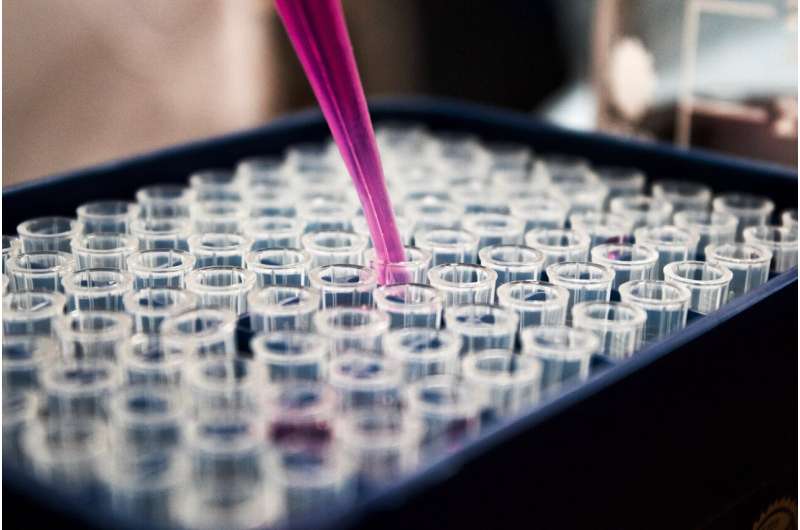This article has been reviewed according to Science X's editorial process and policies. Editors have highlighted the following attributes while ensuring the content's credibility:
fact-checked
proofread
New biomarker identified for predicting adverse events of tuberculosis therapy

Borstel researchers are the first to develop a biomarker to predict the occurrence of neuropathic adverse events during therapy for multidrug-resistant tuberculosis. The results have now been published in the journal Pathogens & Immunity.
Every year, an estimated 410,000 people worldwide contract a multidrug-resistant form of tuberculosis. During treatment, approximately a quarter of patients experience linezolid-associated adverse drug reactions (ADRs) associated with one of the medicines, linezolid. These include nerve disorders such as peripheral neuropathies and optic neuropathies. They cause significant impairment of the quality of life of those affected, weaken adherence to therapy and thus jeopardize the success of treatment.
To date, the underlying mechanisms of linezolid-associated ADRs are not fully understood. A team of researchers from Borstel investigated whether the risk of linezolid-associated neuropathies can be identified and predicted before the start of treatment using transcriptome analyses. The term transcriptome refers to the sum of ribonucleic acids (RNAs).
These are quasi photocopies from genes, which are located in the cell nucleus on chromosomes. As mobile units, the RNAs pass on the information of the genes to other parts of the cells. Their information is transcribed into so-called amino acids within the cells. Proteins are formed from amino acids and these in turn form structures and control elements in the metabolism.
When genes are switched on or off, more or fewer RNA copies are produced. Molecular methods can be used to simultaneously measure the copies of around 50,000 genes in a person's blood and thus determine whether metabolic pathways are switched on or off.
Dr. Maja Reimann from the Research Center Borstel, Leibniz Lung Center (FZB) is an expert in the field of reading this information from cells, processing it and reducing it to a few units of information using mathematical methods and models. This is how she develops biomarkers to predict clinical events.
As part of a team of researchers and doctors, she and Nika Zielinski, a doctoral student in the Clinical Infectiology Group at the Research Center Borstel, have discovered a biomarker that can predict the future occurrence of a serious side effect of tuberculosis therapy.
To this end, data from tuberculosis patients collected by the Borstel team since 2015 as part of studies by the German Center for Infection Research (DZIF) was analyzed. In addition to the systems biology determination of genes and metabolic pathways that were already significantly up- or downregulated in patients with and without Linezolid-associated neuropathies before the start of therapy, a machine learning algorithm was developed.
This identified the molecule Suprabasin (SBSN) as a biomarker for the prediction of neuropathies. The team then investigated the biomarker in an independent group of TB patients. Suprabasin was also able to predict the occurrence of side effects in this cohort.
"The accuracy for predicting neuropathies under tuberculosis therapy with linezolid using the Suprabasin biomarker is not outstanding, but it is the first biomarker ever that can be used to estimate the risk of developing these side effects under therapy," says Nika Zielinski, the first author of the study.
More information: Nika Zielinski et al, A Transcriptomic Biomarker Predicting Linezolid-Associated Neuropathy During Treatment of Drug-Resistant Tuberculosis, Pathogens and Immunity (2024). DOI: 10.20411/pai.v9i2.705




















